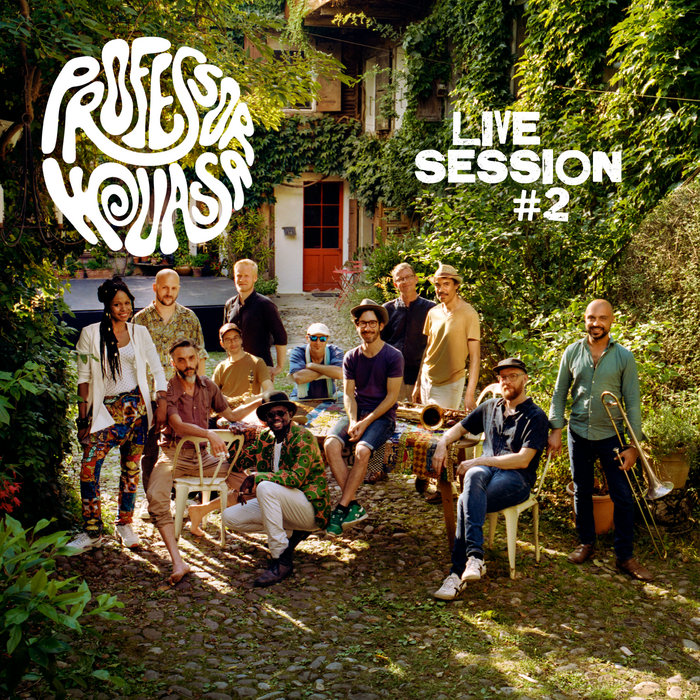
Kanakasi – Live Session #2 – Professor Wouassa
this blog is GROOVY – check out great Soul, Funk, Jazz, Hip Hop, Bass, Breaks , Reggae, House n many more TUNES
Hey there, fellow music lovers! Let’s take a funky journey through the vibrant world of kompa — a musical style that pulses with life and rhythm. Originating from Haiti, kompa is more than just music; it’s a cultural treasure that embodies joy, creativity, and resilience. So buckle up; we’re about to groove through its history!
Kompa (pronounced “kompah”) emerged in the late 1950s when Haitian musicians blended traditional rhythms and instruments with American jazz influences. Picture this: you’ve got rumba beats swirling around alongside cool saxophone solos and the electric guitar strumming some catchy hooks. Sounds sweet, right?
The genre was pioneered by the legendary musician Nemours Jean-Baptiste, who is often called the “Father of Kompa.” He took inspiration from his roots but wanted something fresh for dancers to get down to at parties. His hit “Sweet Power” in 1955 sent shockwaves through Haiti’s music scene and helped lay down tracks for future artists.
In the ’60s and ’70s, kompa really started to blossom. Bands like Carimi brought new flavors into play by incorporating salsa elements while keeping those irresistible danceable grooves alive! This era saw an explosion of passion where live performances became electrifying spectacles.
Flash forward to today: kompa still thrives! Contemporary artists like Kensley Papillon are pushing boundaries while staying true to their roots—melding reggae vibes or even some hip-hop beats into their tracks! You see how it keeps evolving? That’s how kompa stays fresh!
Every great genre has its characters; kompa is no different! The musicians behind this sound carry stories worth sharing — sometimes hilarious ones!
Take for instance Lòlò, known for his over-the-top stage antics. Legend has it he once performed wearing sunglasses that were actually upside-down Coke bottles! Why? To show his “unique vision” of music. And people loved him for it!
And don’t forget about T-Vice, one band infamous among fans not just for their infectious tunes but also because they managed to put out an album titled “Crazy Night” after partying hard… every single night during recording sessions without proper sleep! Talk about living on the edge!
Now let’s talk dance moves because let’s be honest – albeit these days everyone thinks they’re Shakira on TikTok – dancing isn’t always as simple as swaying side-to-side. In kompa culture, it’s all about those smooth yet energetic moves that mirror Afro-Caribbean heritage.
You can find folks channeling their inner dance-floor diva with something called “Pawòl”. This signature move involves sliding your feet while making exaggerated arm gestures reminiscent of trying to swat away imaginary mosquitoes at a summer BBQ party.
One uproarious story goes that during one festival performance in Port-au-Prince, a dancer lost her flip-flop mid-rotation but didn’t miss a beat—literally! She caught everyone off guard by turning her spontaneous footwear disaster into part of her routine under loud cheers from amazed spectators.
What gives kompa its distinctive flavor? Well, let me introduce you to some essential instruments:
Here’s a fun twist: accordionists often claim they attract attention not just due solely being amazing musicians but also enabling them access backstage snacks…because who can resist free pastries?
Typically performed in Haitian Creole or French Creole—which sounds super exotic—it feels inviting yet relatable too since lyrics commonly touch upon love tales or social issues wrapped snugly within joyous melodies sure enough making any heart flutter faster than rollercoasters ride-ups before plunges!
A funny tidbit: One famous song featured lyrics comparing heartbreak akin stepping barefoot onto hot asphalt—a relatable experience if you’ve ever danced barefoot during summer festivities only realizing later you’re practically sizzling… ouch!!
So there you have it—a groovy slice of history surrounding our beloved kompa from Haiti embracing laughter amidst memorable moments encapsulated forever inside lyrics sang deep connection shared between artists + audiences alike creating beautiful memories throughout time-stamped existence since ‘50s onwards till now continuing onward carrying traditions forward woven delicately within modern frameworks establishing bridges uniting cultures globally harmoniously entwined via melody + movement together transcending barriers ultimately celebrating life itself endlessly ringing “Let us dance!”
Next time you’re moving your feet or bopping your head along with those soulful beats remember—you’re being swept away on waves crafted generations back across lands immersed richly infused flavors things harmonious mixing completely unforgettable capturing essence pure joy.. Keep grooving friends!! 🎶

Kanakasi – Live Session #2 – Professor Wouassa